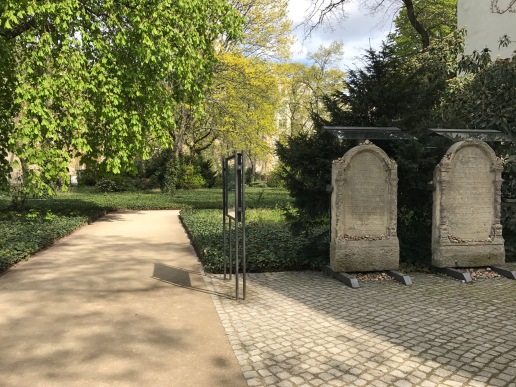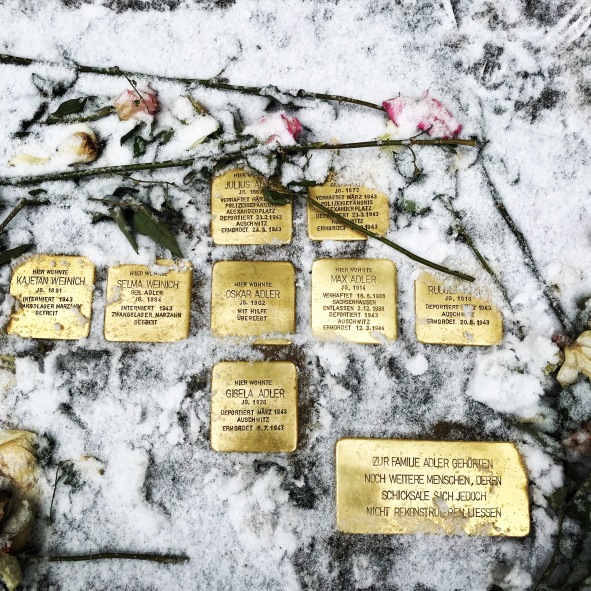
Holocaust memorial stones on Große Hamburger Straße, Berlin
November 9th is such an historic day in Germany that it even has its own name – Schicksalstag or ‘The Day of Fate’. From the Fall of the Berlin Wall twenty-nine years ago to the abdication of Kaiser Wilhelm II a century ago, just days before the end of the First World War, November 9th is etched on the German collective memory.
But it’s what happened 80 years ago today that must never be forgotten. On November 9th 1938, the SA (Nazi paramilitary forces), the Hitler Youth and even some German citizens carried out attacks against Jewish schools, hospitals and synagogues. Jews were beaten up – some even murdered. Kristallnacht or ‘The Night of Broken Glass’ got its name from the shards of broken glass that littered the streets following the violence.
I live in the old Jewish quarter of Berlin and just around the corner on Oranienburger Straße is the Neue Synagogue, the New Synagogue. On November 9th, 1938, it was broken into, Torah scrolls destroyed, furniture set alight. Thanks to a local police official, Otto Bellgardt, the Nazi mob was dispersed, the fire put out and the synagogue saved (for the time being at least). Later today, German Chancellor Angela Merkel, will address that very synagogue in memory of what happened that night.

The Holocaust Memorial, Berlin
Across Germany, Austria and the Sudetenland, almost 270 synagogues were destroyed and more than 7,000 Jewish businesses were damaged. Tens of thousands of Jewish men were rounded up, arrested and sent to concentration camps. This was all justified by the authorities because of the assassination of a German diplomat, Ernst vom Rath, in Paris by a 17-year-old Polish Jew. November 9th, 1938 is now seen as the beginning of the Holocaust.

A sculpture outside the Jewish cemetary on Große Hamburger Straße in memory of the persecuted Jews
When it comes to the persecution of Jews by the Nazis, Große Hamburger Straße, where I live, has a harrowing history. Beside our apartment is a Jewish school and next to that, a Jewish cemetary. Under the Nazis, the school was turned into an internment centre where Jews were held before being deported to concentrations camps. The Gestapo also destroyed the cemetary – desecrating the graves – and turned the area into air raid shelters. In 1945 it was used as a mass grave for those killed in the Allied bombings.

The Jewish Cemetary on Große Hamburger Straße, Berlin
Along my street, and many others across Germany, there are Holocaust memorial stones embeded in the pavements. The Stolpersteine or ‘Stumbling blocks’ mark the last known addresses of Jews before they were sent to concentration camps. On November 9th, people, including my family, will be polishing those stones and lighting candles in memory of those who were so cruelly taken and persecuted.

Holocaust memorial stones on Große Hamburger Straße
Given the rise in anti-semitism across the globe, including the recent attack on a US synagogue in Pittsburg, the anniversary of Kristallnacht should make us all stop, think and remember what can happen all too easily.
Brilliant piece Alex, has made me cry, especially as I’m also reading The house by the Lake. X
Yes Faye it does make you stop and think. You must come and visit and you will see the memorials all around. It’s humbling. x